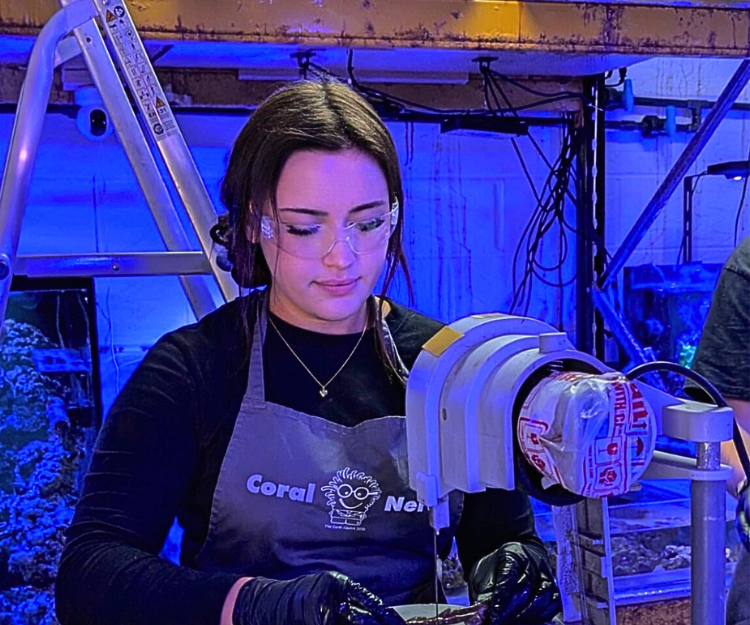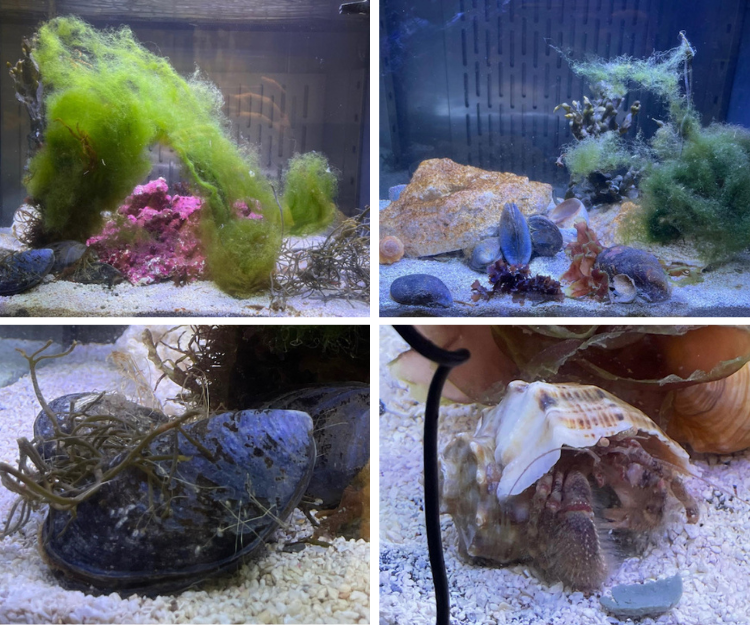
When marine biologist and postgraduate researcher Lily Coombes joined Shrieve’s Specialties Division, she took on an ambitious scientific challenge: to explore the real-world environmental impact of hydraulic oils on cold-water marine ecosystems. Over a three-month placement in Shrieve’s Houston lab, Lily designed and led a complex mesocosm experiment that delivered insights with wide-reaching implications for sustainable fluid technology.
Working in close collaboration with Shrieve’s technical leadership team, Lily recreated a miniature ecosystem modeled on Alaska’s Kachemak Bay—one of the world’s most biodiverse marine environments. Her custom-built tanks mimicked both sandy and muddy shoreline habitats and hosted sentinel species including green shore crabs, blue mussels, hermit crabs, sea urchins, dog whelks, and native algae.
The goal? To compare the behavioral and physiological effects of two types of hydraulic fluids: a conventional mineral oil and Progiline HFD-U, Shrieve’s readily biodegradable, PAG-based fluid.
The results were compelling.
Across both short-term and long-term exposure levels, species exposed to the PAG-based oil maintained normal behavior—feeding, movement, and response to stimuli—with no measurable impact on health or filtration activity.
In contrast, species exposed to the mineral oil exhibited:
• Reduced mobility and stimulus response in crabs and hermits
• Impaired filtration in mussels
• Sediment avoidance behavior in whelks and urchins
• Algae bleaching and tissue decay
Lily also tracked key water quality metrics—ammonia, nitrite, nitrate, and phosphate—and found that mineral oil disrupted microbial nutrient cycling more significantly than the biodegradable PAG fluid.
“It was important to simulate realistic spill conditions—not just chemically, but ecologically,” Lily explained. “Seeing how different species reacted to each product really underscored the importance of biodegradable fluids. The differences were clear.”

Lily’s research offers valuable insight into how biodegradable PAG fluids like Progiline HFD-U perform in cold marine environments, compared to traditional oils used in hydraulic applications such as dockside cranes, ship maintenance systems, and winches. It also reinforces the broader environmental value of adopting safer, more sustainable fluid technologies across the maritime industry.
Her work adds to Shrieve’s growing portfolio of science-backed environmental initiatives—and underscores our ongoing commitment to advancing technology that supports both business and environmental responsibility.
Congratulations to Lily on completing this impactful research—and thank you for bringing passion, precision, and real-world ecological insight to Shrieve’s summer internship program.
